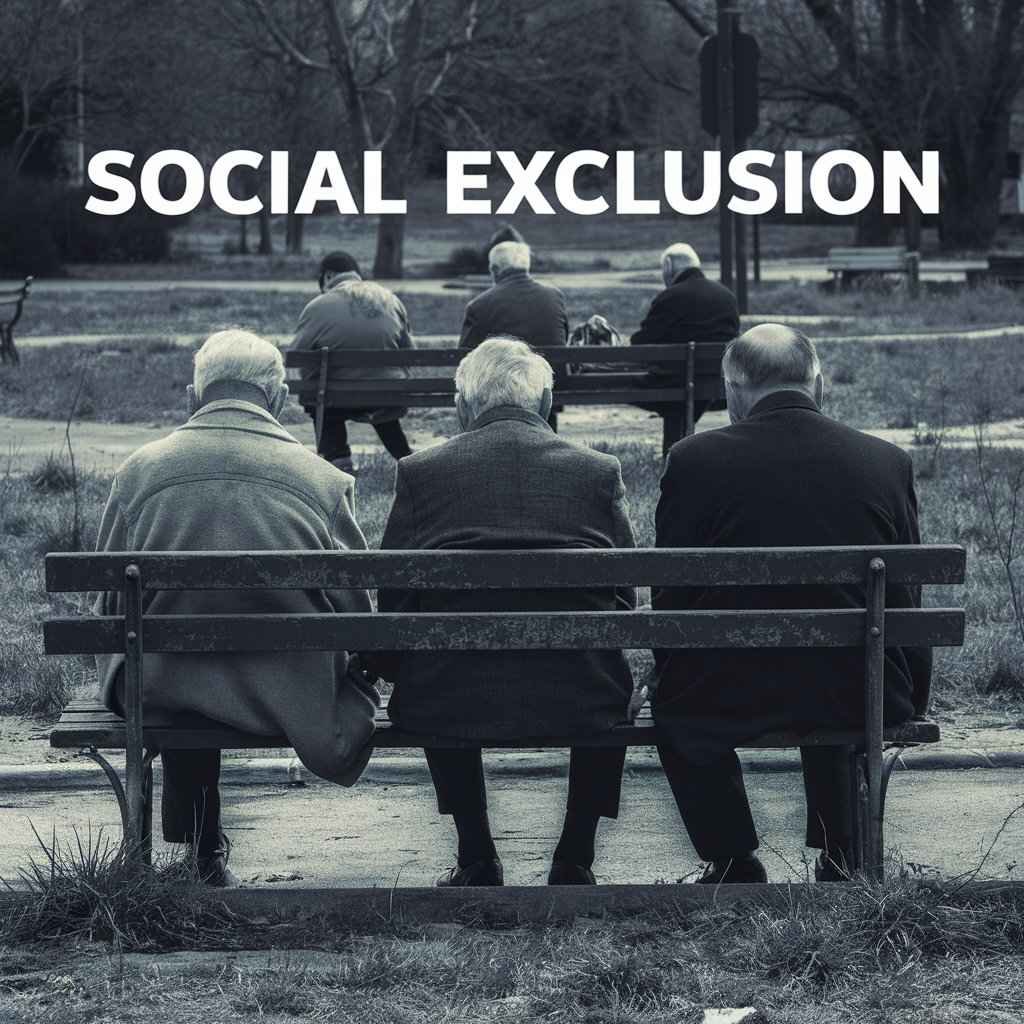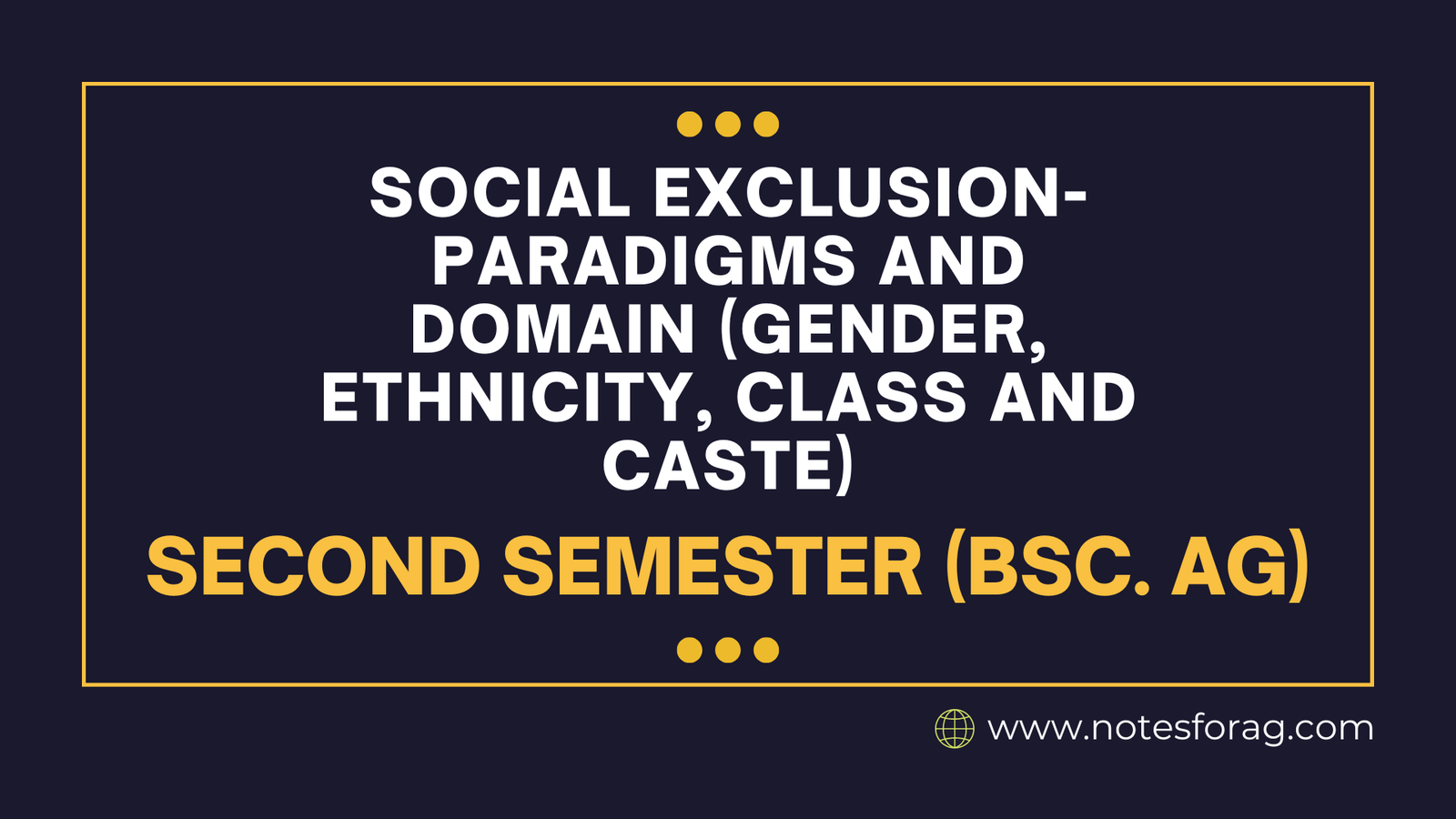The problem of social exclusion is complex and stems from a number of paradigms and domains, such as gender, ethnicity, class, and caste. Certain groups are systematically disadvantaged and marginalized, which restricts their access to opportunities, resources, and rights. Discrimination and unfair treatment of women and non-binary people are common examples of gender-based exclusion. Minority groups that are marginalized because of racial, cultural, or linguistic distinctions are said to be experiencing ethnic exclusion. Economic inequalities that sustain social stratification and poverty are the foundation of class-based exclusion.
Table of Contents
Introduction to Social Exclusion

Social exclusion is a complex phenomenon that prevents individuals and groups from fully participating in the economic, social, and political life of a society. It’s more than just poverty, though poverty can be a significant factor. Understanding the various paradigms and domains of social exclusion allows for a more nuanced approach to tackling this issue.
Paradigms of Social Exclusion: Different Lenses
There are several key paradigms that help us understand the root causes and dynamics of social exclusion:
- Deprivation Approach: This approach focuses on the lack of resources and capabilities that individuals or groups may have. This could include income, education, access to healthcare, or social networks. The assumption is that providing these resources will lead to inclusion.
- Participation Approach: This paradigm emphasizes the importance of participation in social, economic, and political life. It highlights how social exclusion marginalizes individuals and groups from decision-making processes and opportunities to contribute to society.
- Power Approach: This lens focuses on power structures and inequalities within a society. It identifies how dominant groups can use their power to exclude others from opportunities and resources. This exclusion often stems from factors like gender, ethnicity, class, or caste.
- Interactionist Approach: This approach emphasizes the interaction between individuals and societies. It highlights how social norms, biases, and stereotypes can contribute to social exclusion. For example, negative stereotypes about a particular ethnicity may lead to discrimination in employment opportunities.
These paradigms are not mutually exclusive and can be used together to gain a more comprehensive understanding of it.
Domains of Social Exclusion: Multifaceted Marginalization
It manifests across various domains in a person’s life:
- Economic Exclusion: This refers to the lack of access to economic opportunities, such as employment, education, and social protection. It creates a cycle of poverty and reinforces existing power imbalances.
- Social Exclusion: This refers to the isolation and marginalization experienced by individuals or groups from social networks, participation in community activities, and social support structures. This can lead to feelings of loneliness and social isolation.
- Political Exclusion: This refers to the lack of access to political participation, including voting rights and the ability to influence decision-making processes. This limits the voices of marginalized groups who are unable to advocate for their interests.
- Cultural Exclusion: This refers to the marginalization of an individual’s or group’s cultural identity, language, and traditions. This can lead to feelings of alienation and a sense of not belonging.
Considering these domains allows for a targeted approach to addressing it.
The Interplay of Gender, Ethnicity, Class, and Caste
The paradigms and domains of it are further complicated by the interplay of various social identities:
- Gender: Gender roles and expectations can contribute to social exclusion, particularly for women who face barriers in education, employment, and political participation.
- Ethnicity: Ethnic minorities often face discrimination and exclusion based on their cultural background or language.
- Class: Socioeconomic status significantly influences one’s access to resources and opportunities. Lower-income classes are more likely to experience social exclusion across various domains.
- Caste: In societies with entrenched caste systems, individuals from lower castes may face severe social exclusion and limited opportunities for upward mobility.
These social identities are often interconnected. For example, a woman of color from a low-income background may face a compounded form of it due to the combined effects of gender, ethnicity, and class.
Understanding the paradigms, domains, and intersections of it allows for the development of comprehensive strategies for promoting inclusion. By tackling the root causes of exclusion in all its forms, we can work towards building a more just and equitable society.
Frequently Asked Question(FAQ)
What is social exclusion?
Social exclusion refers to the deliberate and systemic marginalization and disadvantage of specific groups due to factors like gender, caste, ethnicity, and class, which limits their access to opportunities, resources, and rights.
How does gender contribute to social exclusion?
Women and non-binary people are frequently the targets of discrimination and unfair treatment as a result of gender-based exclusion, which results in differences in political representation, work opportunities, health care, and education.
Related Articles

